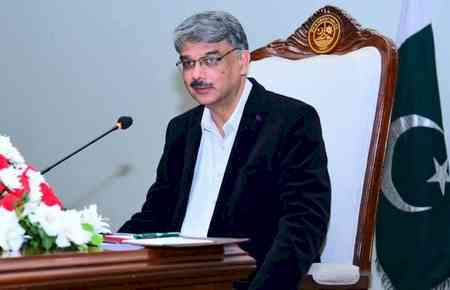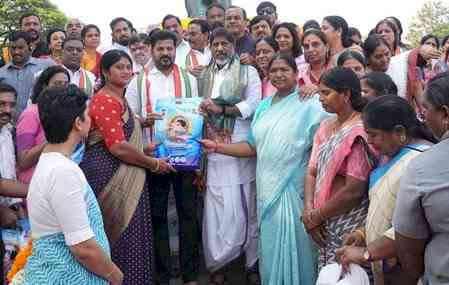Panel Discussion on “Agriculture Warehouse Market in India 2025–2030”
Prof. Ramesh Chand, Member, NITI Aayog, Government of India - Need for warehousing will be much greater than the production, and the quality of warehouses needs to be focused, at PHDCCI “Panel Discussion on Agriculture Warehouse Market in India 2025–2030”.

New Delhi, November 20, 2025: India has emerged as the world’s second-largest producer of agricultural commodities and the eighth-largest exporter, with food grain output touching a record 354 million tonnes in 2024–25. As production is set to rise to nearly 368 million tonnes by 2030–31, strengthening scientific storage and post-harvest systems is a necessity for safeguarding food security, boosting farmer incomes, and cutting avoidable losses. A scaled-up national investment push in modern storage infrastructure is required to keep pace with India’s growing agricultural potential.
To deliberate on these opportunities and the road ahead, PHDCCI organised a Panel Discussion on “Agriculture Warehouse Market in India 2025–2030” on 20th November 2025, from 10:30 AM to 1:00 PM at Radico Room, PHD House, New Delhi.
Warehousing is needed to sustain buffer stocks along with maintaining inter-year and intra-year price stability of food, as it constitutes a major portion of household consumption expenditure, said Prof. Ramesh Chand, Member, NITI Aayog, Government of India at the Panel Discussion.
Prof. Ramesh Chand appreciated the report by PHDCCI and said that the report has created value. He mentioned that the report has adequately addressed issues of quantity and quality of warehouses and has put a common thread in all aspects of agricultural warehousing. He urged PHDCCI to create another analytical report on cold storage to complete the warehousing dimensions of India’s agriculture and organise a workshop in collaboration with NITI Aayog, Government of India to discuss issues of this sector in detail and share the recommendations with the concerned Ministry of the Government.
Dr Shailja Vaidya Gupta (Former Senior Adviser at the Office of Principal Scientific Adviser to the Government of India), Advisor to Board of Sapphire Warehousing Pvt Ltd, said that climate adaptive silos are the only way that India needs to go forward with. For India, buffer storage is a better way forward than trade. She added that climate change has become erratic, and there is a need to be more focused on expanding warehousing capacities, encouraging private participation, increasing ease of warehousing, improving logistics and stability of the regulatory environment.
Pawan Preet Singh, representing Sapphire Warehousing, While setting the tone and acknowledging PHD Chamber’s initiative, he highlighted the need to strengthen the warehousing sector by improving its viability and ease of doing business. He underscored critical issues such as high insurance costs, GST challenges, stringent contractual clauses, payments to PEG providers based on the 174 MT stack size, and the burden of interest costs—emphasizing these as urgent matters requiring immediate intervention. He also stressed the importance of enabling economical financing and granting priority-sector status to the agri-warehousing industry.
Kunal Bavdhankar, Executive Director, Woodcreek Investment Advisors, He underscored that India’s warehousing sector cannot be governed by a uniform technology framework. Technology needs to be applied selectively, based on each warehouse’s capacity, geography, operational model, and the skill profile of its workforce. He proposed that building small, decentralized food parks and promoting warehouses with integrated services would meaningfully enhance efficiency across value chains. He further stressed that a robust agri-logistics backbone is essential for strengthening the entire ecosystem and unlocking higher productivity and cost efficiency.
Ajay Kakra - Leader – Food and Agriculture, Forvis Mazars highlighted that a gap exists in terms of actual capacity required and peak capacities. This gap can be filled in by creating temporary storage capacities. He mentioned that there is a need to lay thrust on digitisation of the entire warehousing process, integrating private and public warehousing capacities, minimising warehousing losses and creating a resilient and adaptive system of warehousing.
Rajat Chatterjee – Executive Director, Prowess Advisors, said the financial rules for the warehousing system are conceptually sound, and this sector has the keen interest of investors. He highlighted that e-negotiable bills are unlocking capital for this sector, but the utilisation remains low because of the numerous small number of warehouses and low rural financial literacy. Challenges exist in terms of geographic distribution and climate risks. He mentioned that, in this regard, there is a need to focus on blended finance concepts, which are new but work very well.
The esteemed panel also released the “Agriculture Warehouse Market in India 2025-2030”. The report highlights that India’s rapidly rising foodgrain production has created a projected 69 MMT scientific storage deficit by 2030 that demands urgent national investment. While government schemes like PEG, AIF, and PPP silo projects have strengthened the policy environment, further reforms in contracts, land access, and financing are needed to fully unlock private investment. The future of India’s grain management will be shaped by advanced technologies such as IoT-based climate monitoring, automated quality labs, digital twins, and blockchain for end-to-end traceability. With the foodgrain warehousing storage market projected to expand from ₹37,336 crore in 2025-26 to ₹43,953 crore by 2030-31, India is poised for multi crore opportunity driven by PPP silos, buffer stock needs, and leading private players.
Dr Ranjeet Mehta, CEO & Secretary General, PHDCCI, welcomed the delegates and said that India is an agrarian economy and is poised to become “the food basket of the world”. The agriculture sector is a consistent driver of India’s economic development and “Viksit Bharat@2047”. Within India’s agriculture sector warehousing and logistics is the silent engine of growth. Therefore, our government is taking prudent initiatives to promote private sector investment in warehousing in India.


 City Air News
City Air News 










